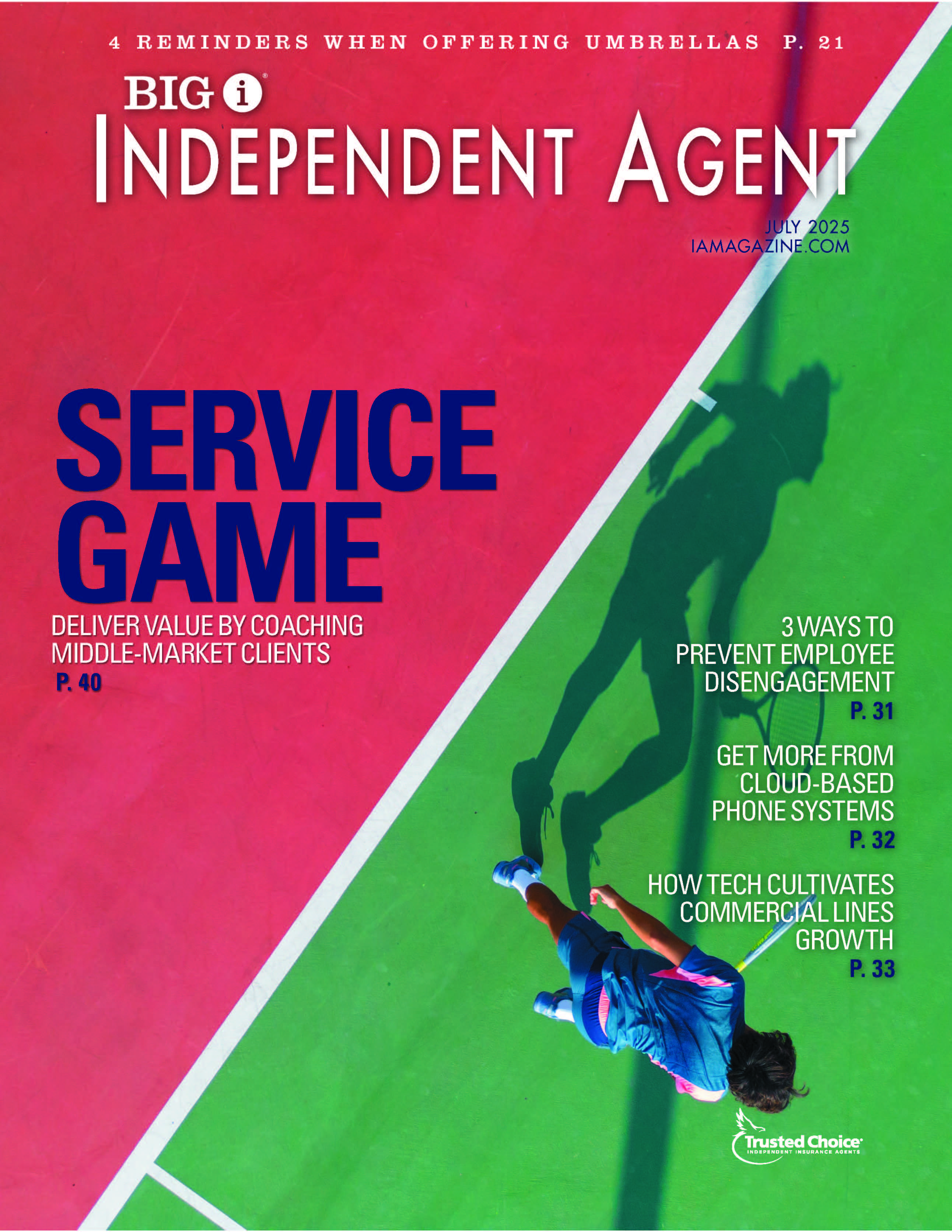Economic Downturn Drives D&O Litigation
By: Banham
D&O litigation from a bankruptcy used to be considered an esoteric exposure that would never happen. Now, it is very real—and very costly.
In many cities, boarded-up windows in the central business district tell a widespread tale of companies gone bust—and business owners and board directors caught in a tangled web of litigation.
There were 60,837 business bankruptcies in 2009, up 40% from the same period a year before, according to the American Bankruptcy Institute. The number is the highest total since 1993. In the first quarter of 2010, business failures continue unabated—14,608 bankruptcies, up 18% from 2009’s disastrous first quarter total. Many of these belly-up businesses are large corporations; most, however, are small, private-and family-owned companies.
Where a bankruptcy goes, litigation follows. With shareholders, investors, partners, vendors, regulatory agencies, customers and even competitors all seeking the same thing, business’ owners, senior officers and board directors are all on the hook up to the limit of their personal assets. “The popular belief is that D&O insurance is needed only by large, public companies, but there are all sorts of ways that smaller, private companies get sued,” says Woody Woodard, CEO of Insurance Alliance, a Houston-based independent agency that is part of Marsh & McLennan Agency, Inc. “With so many financial insolvencies of private companies, we’re seeing much more D&O litigation.”
Bankruptcy Ups the Stakes
There is a heightened risk of a D&O lawsuit when a company files for Chapter 7 or Chapter 11 bankruptcy protection. “Bankruptcies often trigger a D&O claim because somebody lost money, they’re not happy about it and they blame management for the trouble, whether or not this is justified or warranted,” says Robert Hartwig, president and chief economist at the New York-based Insurance Information Institute. “Obviously, the financial crisis and subsequent recession took a lot of companies down, rather than mismanagement or corruption. But, that doesn’t mean that the people who lost money as a result of the bankruptcy won’t file lawsuits. When they do, a company’s owners, senior leaders and board directors or anyone else who is sued must pay the legal defense costs, which can be substantial. And that’s just the beginning.”
The litigation journey is fraught with anxiety. Bankruptcy increases the likelihood of a D&O lawsuit, says Robert Yellen, chief underwriting officer for executive liability at Chartis. And it also increases the potential financial severity, because a bankruptcy trustee will chase the company harder and longer for every penny.
Lawrence Racioppo, executive liability practice leader at consultancy Towers Watson, agrees that a bankrupt business heightens both the frequency and severity of D&O claims. “When a company becomes insolvent, it tells you that there were some decisions made that were bad,” he says. “While a ‘bad’ decision doesn’t necessarily mean the decision-maker is exposed to wrongdoing, it does mean that investors are more likely to take a deeper look at the decision and who made it to determine whether or not that person acted prudently in the company’s management. The decision maker’s first line of defense is the ‘business judgment’ rule. His or her next line of defense is D&O insurance.”
Risk Goes Unprotected
Despite the high risk of a D&O lawsuit in a bankruptcy proceeding, only one-fourth of private companies purchase D&O insurance and related fidelity insurance and employment practices liability insurance, according to a 2010 survey by Chubb Group of Insurance Companies. But the risk keeps cropping up: One in eight private companies experienced a D&O lawsuit in the past five years. “Given the direct correlation in this economy between the risk of bankruptcy and the greater likelihood of a D&O claim, this is certainly an opportune time for independent agents and brokers to persuade their clients of the need for D&O and other key business liability insurance policies,” says Lisa Jones, Chubb vice president and private commercial product manager. How costly? According to the Chubb 2010 Private Company Risk Survey, the average financial loss from a D&O lawsuit, which includes legal defense expenses and the case settlement or judgment, is $225,682. And that’s just the average. “D&O liability is a low-frequency/high-severity risk, so it isn’t surprising that although only one in eight companies reported being sued in the past five years, losses of $1 million and even $5 million in some cases were cited,” Jones says. “Bear in mind that these dollars come directly out of the defendants’ wallets.”
Compounding the risk is the sheer variety of claimants. There are many potential litigants following a bankruptcy, notes Carol Zacharias, senior vice president and North America deputy general counsel at ACE Group. As a company moves toward bankruptcy, its duties shift under the law. “Previously, the duties are owed the investors in the company,” Zacharias says. “But once a financial insolvency rears, board members now have the duty to preserve the assets for the benefit of creditors.”
Besides investors, bankrupt companies face a long list of creditor litigants, including employees, vendors, banks, service counterparties and customers. Various government regulators like tax authorities come hunting in situations where the bankrupt company has not paid or withheld taxes, owes back wages or remains financially responsible for workers compensation claims. “Everyone wants their share, including trustees and receivers,” Zacharias says. “The company’s books and bank accounts are opened and this can invite even more litigants to the table. For example, if it’s determined that full disclosure was not provided a third party to whom the company sold an asset, they’re likely to show up at court, pricey lawyers in tow, for what they believe is owed them.”
Besides bankruptcy and related D&O risk, there are other D&O scenarios that smaller companies should contemplate. “One of the classic situations we’ve seen is a lawsuit brought by a private company’s competitor,” Jones says. “Say some senior staff leave and join a competing company. The previous employer will sue the competitor’s directors and officers alleging that trade secrets were stolen. It’s not as uncommon as you would think.”
Breaking Down the Coverage
D&O insurance protects a company’s directors and officers from liability arising from their actions, picking up the tab unless these actions are proven to constitute criminal misconduct.
The three basic insuring agreements within standard D&O policies, dubbed Side A, Side B and Side C. Side A insurance covers the directors’ and officers’ defense costs, settlements and judgments that are not indemnified by the corporation. Side B reimburses the corporation for D&O claim losses incurred by directors and officers that the corporation has indemnified, but it does not absorb the corporation’s own liability losses. Side C (also called “entity coverage”) steps in to protect the corporation for its own liability. Side C coverage was developed in the 1990s to eliminate the contentious allocation issues that arose between the corporation and the directors and officers under standard D&O policies, which only covered the directors and officers, according to Zacharias.
The three insuring agreements typically are part of customary D&O insurance policies in the market today. In effect, the directors and officers essentially share the limits of the policy with the company. This raises an uncomfortable dilemma— the possibility that the company’s separate liability will deplete the limits of insurance available to the directors and officers. To mitigate this possibility, a corporation can also purchase a standalone Side A policy, in which a specific financial limit of protection is dedicated exclusively to the directors and officers.
The unique needs of private companies and not-for-profit organizations compelled major insurers like Chubb, ACE, Chartis, Travelers and others to create a separate D&O policy in the early 1990s geared to these organizations’ specific liabilities and insurance needs. The insurers more recently have unveiled a package liability insurance product that combines D&O liability with other business liabilities like crime, employment practices liability (wrongful job termination, discriminatory hiring practices, sexual misconduct, etc.) and fiduciary risks.
No two policies are exactly alike. For example, not all D&O policies contain coverage for the “Debtor-in-Possession.” “When a bankruptcy petition is filed, it activates a moratorium on the debtor company’s pending obligations and potential liabilities,” Zacharias explains. “The company can continue to operate with either existing or new management as a Debtor-in-Possession, in control of the company’s assets during a Chapter 11 debt and equity restructuring.” She notes that when the Debtor-in-Possession is comprised of new management, it raises the risk of a lawsuit against the previous directors and officers.
Racioppo says that once a Debtor-in-Possession is identified, “You want to be sure that D&O coverage remains during this period. The same applies in a ’change in control’ situation. You want to be sure if the bankruptcy filing triggers a change in control, meaning the D&O policy would only apply to wrongful acts that occurred prior to the filing, that there is insurance coverage going forward.”
Making the Case for Coverage
Yellen and others note that the nuances of D&O liability make the role insurance agents and brokers play just as vital as the company’s attorneys to ensure proper D&O protection. “With bankruptcy filings proliferating, agents have an opportunity to sit down with their clients that don’t have D&O insurance to explain why they need it, and to confer with those who do have it about the efficacy of their current programs,” says Yellen.
Virtually every company, regardless of size, should purchase a business liability package policy that includes D&O protection, says Woodard. Often, commercial clients that are sole proprietors or a company owned by two brothers think they may not need D&O insurance since the owners and investors are one and the same, but the investors are only one class of litigants. There are still the regulators, vendors, customers and others.
Why do so many smaller companies shirk the need to buy the insurance? “I think they just aren’t aware of the risk,” Woodard replies. “The way I market it to my clients is by illustrating actual claims experience. Once someone understands the many ways in which their pockets can be emptied, they’re more apt to buy the insurance.”
Visions of the house, the cars, the kids’ college tuition funds, the furniture— every single thing a person owns being liquidated to pay claimants—can have a powerful impact, he says. “It’s a big ‘Aha!’ moment, for sure.”
Banham (Russ@RussBanham.com) is an IA senior contributing writer.
Debunk client D&O Myths
Commercial clients often cite a variety of reasons for not needing D&O coverage. Answer their myths with these realities from Tony Galban, senior vice president and underwriting manager, directors and officers liability insurance, Chubb Group of Insurance Companies:
Myth: There are no outside shareholders so I can’t be sued. Reality: A D&O liability lawsuit can also be brought against corporate executives by customers and clients, government regulators, creditors and lenders and competitors.
Myth: My general liability and umbrella insurance coverage will take care of every possible lawsuit. Reality: General liability does not typically cover the financial consequences for alleged wrongdoings such as breach of fiduciary duty/mismanagement of the business and operations, wrongful interference with a contract, failure to deliver on services, disclosure of materially false or misleading information, violation of state and federal laws, and more.
Myth: My company will pay for all expenses associated with a directors and officers liability lawsuit. Reality: Your company may not always be able to pick up the cost of a D&O claim for its directors or officers. It may be restricted by state law or it could be financially insolvent. Directors and officers without D&O liability insurance may be forced to pay for lawsuits out of their own pockets.
—R.B.
Teach D&O 101
Looking to educate commercial clients on the importance of D&O protection? Help prospects evaluate their current coverage, or make the case for purchasing D&O coverage, with this checklist of suggested D&O coverage features from Carol Zacharias at ACE. Entity is an “insured” even when bankrupt: Make sure that the definition of entity includes the entity as a debtor in possession, so that the entity is still an insured even though its status has changed. insured v. insured exclusion exception: Make sure that the ‘insured v. insured’ exclusion in the policy form does not apply to suits by the bankruptcy trustee or receiver, who may sue D&Os. Regulatory exclusion: Make sure there isn’t one. Bankruptcy exclusion: Make sure there isn’t one. change in control: Make sure that activities that may happen in bankruptcy, such as changes in a majority of the board or significant sales of assets, will not trigger the change in control section of the policy and place the policy into run-off.
When an entity goes into bankruptcy, its assets may be automatically frozen for the benefit of creditors, under the provisions of bankruptcy law. Courts are split, with some finding that the D&O policy is an asset of the bankrupt estate and so is subject to the automatic stay. Others find that, while the policy was bought by the entity so it is frozen, the proceeds were intended for the non-bankrupt D&Os and so the proceeds are not frozen. To prepare for this issue, use the following items as a guide: Priority of payments: Make sure that the policy has a ‘priority of payments clause,’ which typically provides that the policy proceeds will be paid first for the D&Os and only thereafter for the entity. This supports the position that the policy proceeds should not be frozen as part of the entity’s bankrupt estate because the proceeds are first and primarily for D&Os, who are not bankrupt. Waiver of automatic stay in bankruptcy: For the same reason, make sure there is a policy clause in which the entity agrees to waive the automatic stay. Eliminate entity coverage: To steer the policy away from the bankruptcy and automatic stay. Side a: Consider purchasing a Side A policy, which is a type of D&O policy that insures only directors and officers. Permission of bankruptcy court: D&Os have been successful in asking bankruptcy courts that have stayed the policy or its proceeds for interim payments under the policy.
—R.B.









